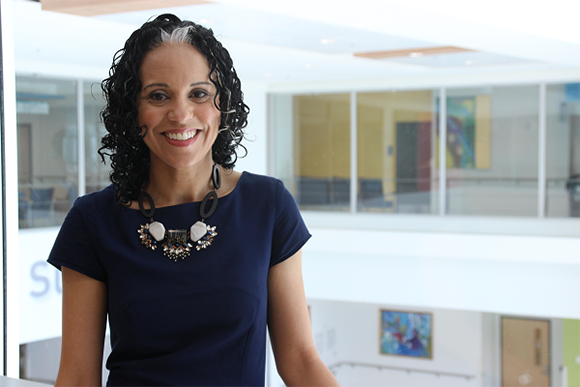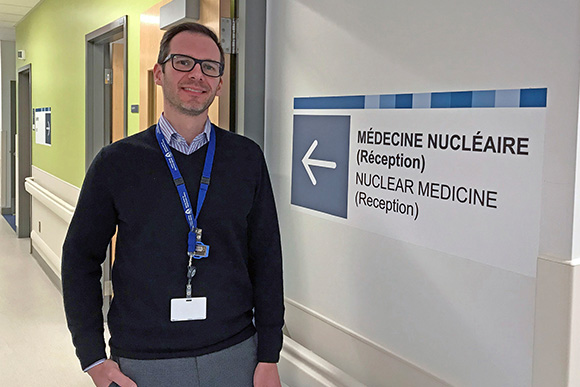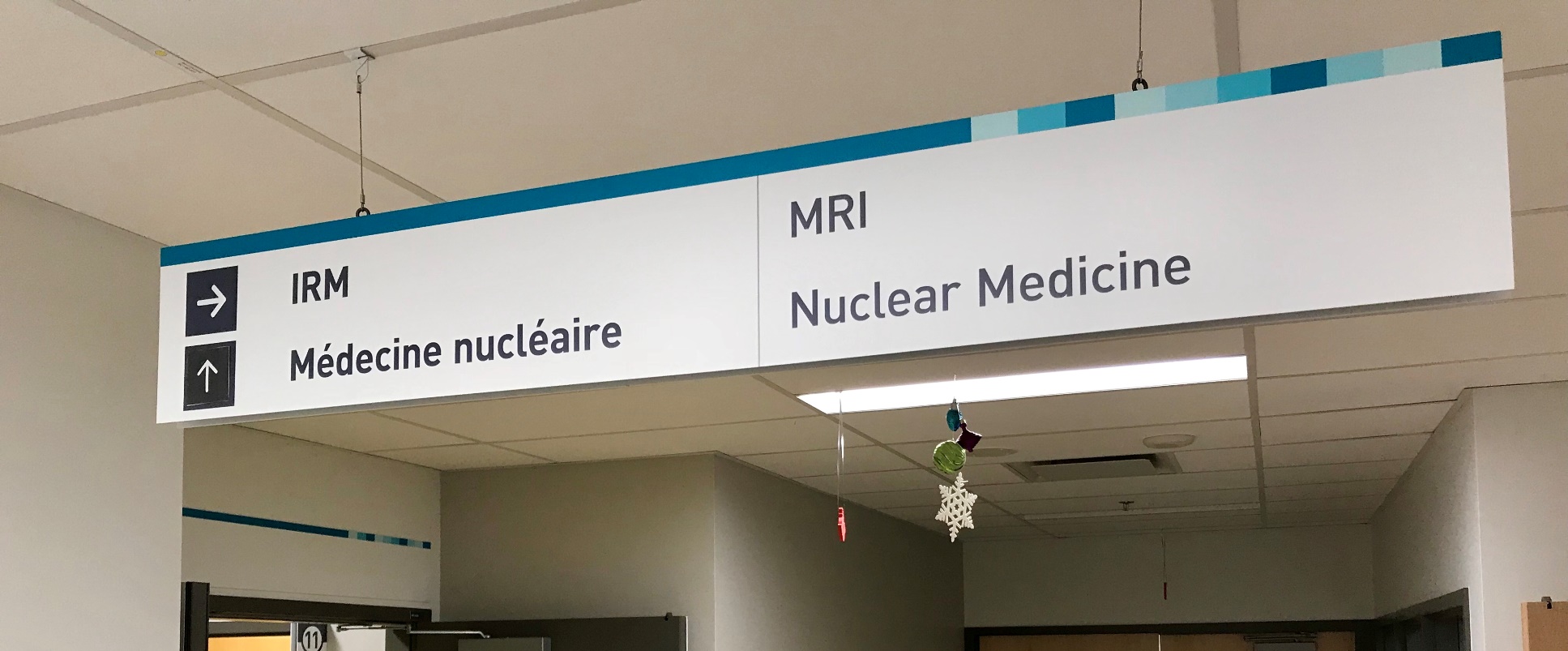Umbrella of care: the Children’s and RVH work together for benefit of one young patient
The design of the Glen site – where a pediatric and adult hospital live side-by-side – has led to a unique MUHC collaboration for the benefit of a particular pediatric patient.
There are few situations where a Montreal Children’s Hospital (MCH) patient would be directly impacted by the Royal Victoria Hospital (RVH). But the complexities around the treatment of one eight-year-old patient led Dr. Meranda Nakhla, a pediatric endocrinologist at the Children’s, to work directly with the RVH to find a solution.
Dr. Nakhla’s patient is undergoing treatment for papillary thyroid carcinoma, which involves swallowing a radioactive iodine pill. Children’s patients undertake this aspect of treatment at CHU Sainte-Justine (CHUSJ) because it has the infrastructure and mandate to monitor the procedure. But, in this instance, the child was struggling to swallow the pill.

A unique collaboration
With the assistance of her Sainte-Justine nuclear medicine counterparts, Dr. Nakhla determined liquid iodine could be an alternative and feasible solution. Sainte-Justine, however, was in the midst of upgrading equipment to its facilities so it couldn’t administer the radioactive drink; neither could the MCH since there are no shielded rooms for hospitalization or in-house nuclear medicine specialists. Luckily, the RVH did possess the means.
Dr. Anthony Ciarallo, Director of Nuclear Medicine at the RVH, worked with Dr. Nakhla to get this unique multidisciplinary process moving; the RVH had never had admitted a pediatric patient for this type of care before.
“People really pulled together in this extenuating circumstance,” said Dr. Nakhla, who knew the only other feasible option for her patient was to be treated out-of-province. “Everyone came together for the patient’s benefit, with everyone problem-solving together.”
The extent of the collaboration was clear from the number of players involved: Nuclear Medicine and Nursing at the RVH, MCH and CHUSJ, plus Pediatric Psychology, Social Work, Child Life Services, Radiation Safety and Medical Records, which need to adjust to a pediatric subspecialist with RVH input responsibilities.
“It’s the first time we collaborated so closely with the Children’s,” recalled Dr. Ciarallo. “We’ve all worked together but, in terms of patient care, I think it’s the first time so many teams were involved together between children’s and adult sites.”

A complex solution
Suzanne Gagnon, the assistant chief technologist of pediatric nuclear medicine, found herself working alongside RVH counterpart Chantal Roussin, who she already saw daily at the Glen. Suzanne was able to focus on the task at hand knowing Chantal could assist with all questions regarding the RVH site, from paperwork to safety concerns to functions. The child was administered a 5-millimeter (ml) dosage of radioactive iodine orally with a 10-ml syringe, a ‘juice box’ method that minimized the risk of a radioactive spill, which was a major concern for the radiosafety team.
The treatment itself is daunting enough for a child, who is also sequestered in a lead room without windows because of elevated radiation levels. A technologist assisted in preparing the room that would house the young patient for 48 hours, or until the radioactive levels have dropped. Technicians were able to leave the door open a crack so the patient’s mother – who stayed outside the room for the duration of the stay – could speak with her child. The dedication to the patient’s health and the family’s comfort was a clear priority from all sides.
Continuum of care
While RVH colleagues may have felt some initial jitters about treating such a young patient, those quickly evaporated as both teams leapt into action.
“There was a bit of apprehension, no one wanted to make a mistake or forget something – everyone was a little on edge because no one wanted to mess up,” said Dr. Ciarallo. “Everything was triple-checked to make sure there were no oversights and everything would go to plan. Everyone did a great job; it couldn’t have gone any better.”
Dr. Nakhla agreed.
“It was a remarkable effort from a lot of people at the RVH, the MCH and CHUSJ in coordinating care and getting the patient the care they needed,” she said. “It all worked out, the family felt well taken care for and supported with the continuum of care we were able to provide.”
Moving forward, the patient will be monitored and both the Children’s and adult hospitals at the Glen have first-hand experience that collaboration is possible when necessary.
“In this exception, it shows anything is possible. It would not at all have been possible if we had been at the old site on Tupper Street, this was really only possible as a result of being at the Glen. We would never have even thought about it before,” says Dr. Nakhla.

